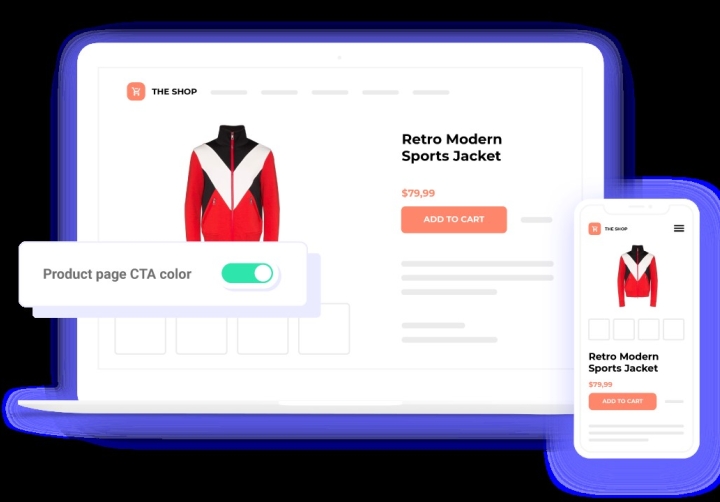
Conducting Successful AI Personalization and Pitfalls to Avoid
In a world of ever-increasing choice, being able to provide a personalized experience is central to attracting, converting and retaining digital consumers. It enables website visitors to quickly find the products and services best suited to their needs and thus increases sales and revenues.
However, scaling personalization across websites with millions of visitors, in real-time, can be a challenge. Artificial intelligence provides the ability to extend personalization, but can bring risks if not deployed correctly.
To help companies gain the benefits of AI-driven personalization and to overcome the pitfalls, Forrester has produced an in-depth report, “Adopt AI for Personalization Safely and Smartly to Win European Customers”. Guest Speaker James McCormick, Forrester Principal Analyst and the report’s author featured in Kameleoon and Attraqt’s AI-driven personalization webinar. Watch it here.
1 The benefits of personalization and Artificial Intelligence
Personalization drives business success - according to McKinsey, personalization can deliver a 10-30% uplift in revenue and retention and between 10-20% in improved efficiency. 73% of consumers surveyed by Kameleoon said they wanted brands to offer personalization across the customer journey, with half saying they’d switch away from companies that didn’t deliver the experience they wanted.

Deepening engagement with AI
Traditional personalization, such as using segmentation and pre-set rules to deliver specific experiences to consumers only goes so far. Consumer needs are changing quickly and they demand true personalization, in real-time, across the customer journey. This is where AI-driven personalization delivers real potential value.
Forrester defines AI-driven personalization as the practice of applying machine learning to customer data to frame, guide, extend, and enhance customer interactions.[1]
The benefits of AI-driven personalization include:
- The ability to deliver a more meaningful, empathic experience that truly understands the consumer as an individual, based on their real-time interactions
- Increased value from the big data generated by digital interactions by using machine learning algorithms to analyze enormous volumes of information and drive personalization at scale.
2 Balancing the value and risks of AI-driven personalization
Given its benefits it is no surprise that 63% of retail brands planned to invest in AI personalization in 2020. However, it also introduces business and reputational risks around three main areas:
Regulatory compliance
Consumers want greater control over their data and how it is used and protected in the digital world - and this is backed up by increasing legislation such as the GDPR and CCPA. Brands must therefore ensure that they are meeting the standards that their customers and regulators demand, particularly when it comes to data containing personally identifiable information.
Lack of control
Many AI solutions operate as a black box, with machine learning algorithms operating independently to meet a pre-set goal. Removing human control can lead to opportunities being missed, with actions taken by AI not meeting your overall strategy and objectives.
To learn more read our article explaining Why AI makes the human touch even more important in personalization.
Ethical considerations
Consumers have high expectations of brands and how they should behave - rightly, they expect them to operate ethically. However, due to the closed nature of AI algorithms it can be difficult for marketers to understand exactly how machine learning has helped them achieve their personalization objectives. AI can therefore unintentionally operate in discriminatory or unethical ways in order to meet its set targets - damaging brand reputation and leading to legal issues.
Overcoming the risks
All three of these key risks can be mitigated by the type of data used within AI-driven personalization and the degree of human control that marketers have over algorithms. For example, by focusing solely on anonymized behavioral data (such as from website browsing), there is a much lower risk of identifying an individual visitor, while still providing sufficient information to deliver a real-time, personalized experience. Equally, using a solution that involves human marketers in decision-making gives clear reporting and oversight of why AI-driven actions have been taken, retaining control to ensure that ethical and business objectives are continually met.
3 The 4 stages of successfully moving to AI-driven personalization
For brands looking to embrace the benefits of AI-driven personalization - and to minimize the risks - Forrester recommends following a four stage process in its report.
Stage 1: Maximize your existing personalization investments
Start by reviewing your current activities that support personalization, such as testing, segmentation, recommendation engines and rules-based personalization. Create and document best practices and use your results to create a business case for AI-driven personalization.
Stage 2: Invest in data science skills and the right technology
As you become more mature extend your operations by adding data science skills and more sophisticated AI-based technologies. These should use low-risk, anonymized sources, such as behavioral data to deliver maximum value for your business. At the same time build your data governance capabilities, ready for moving to include more identifiable and high-risk data into your activities.
Stage 3: Incorporate personally identifiable data into your strategy
Once you have data governance measures in place, you can look to begin to use identifiable data safely within AI-based personalization. Start with known visitors (such as existing customers logged into your website) to build use cases that are simple for stakeholders to understand and where you remain in complete control.
Stage 4: Extend to deploy advanced AI algorithms
By the time you reach stage 4 you will possess a mature and robust set of data science and data governance processes, coupled with advanced technologies that allow you to deploy more sophisticated algorithms that can work with sensitive data safely. This enables you to deliver truly individualized experiences, totally personalized to each and every consumer that interacts with your brand.
Successful AI-driven personalization delivers enormous benefits to brands, enabling them to differentiate and grow their business. However, it requires careful planning, the right skills, partners and technology in order to minimize risks and maximize results. Find out more on how to achieve this in Kameleoon and Attraqt’s webinar, featuring James McCormick, Principal Analyst at Forrester. Watch it here.
[1] Forrester Research, Inc., The Forrester Tech Tide™: AI, Automation, And Robotics For Customers And Employees, Q2 2019, May 16, 2019




